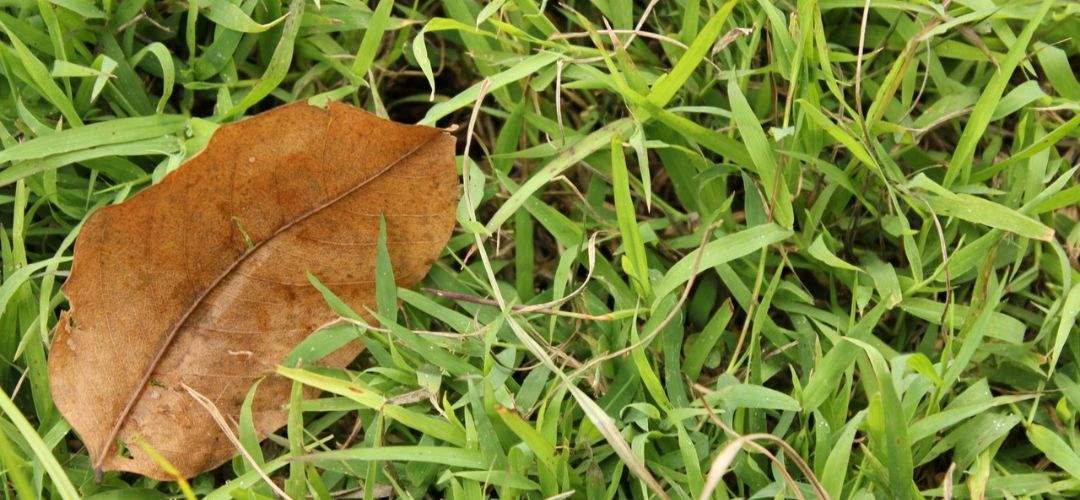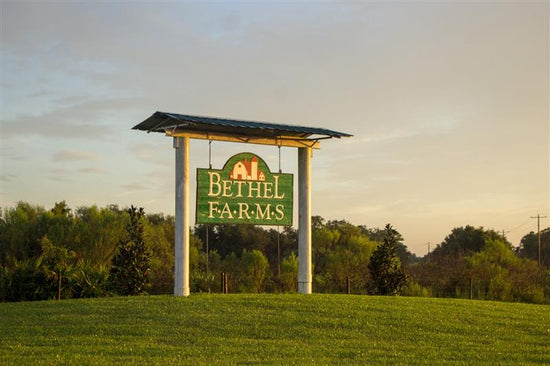
Why Grass Blades Fold in Half During the Heat
Jamie TedderMuch like sunflowers tilt their heads to follow the sun, grass responds to the sun’s intensity in its own way. While sunlight is essential for healthy growth, too much heat and not enough water can quickly turn things sour for your lawn. You might observe something curious during those intense heat waves: grass blades folding in half lengthwise, almost like they’re closing up shop for the day.
This subtle change isn’t random—it’s a built-in defense mechanism. Folding helps grass reduce its surface area, limiting water loss during extreme heat. This behavior is one of the earliest signs of drought stress in grass, and it’s a natural watering cue every homeowner should learn to recognize.
Understanding Drought Stress in Grass
Drought stress in grass occurs when your lawn isn’t receiving enough water to meet its basic needs, especially during hot, dry periods. Unlike pests or fungal diseases that show up as visible damage or discoloration, drought stress tends to be more subtle at first.
When the soil lacks moisture, grass enters a state of self-preservation. One of the first responses is blade folding, where grass folds lengthwise to reduce sun exposure and minimize moisture loss through transpiration.
You’ll typically see this happen:
-
On hot, sunny afternoons
-
After several days without rainfall
-
If your soil dries out faster than it’s replenished
If left unaddressed, drought-stressed grass can begin to turn bluish-gray, develop dry patches, or become brittle underfoot.
Drought-Stressed Grass vs. Poor Watering Habits
It’s important to distinguish true drought stress from poor watering habits. Not all grass folding means your lawn is in trouble—it could simply be reacting to inconsistent care.
Signs of drought-stressed grass:
-
Blades fold in half during the heat
-
Grass has a bluish-gray hue
-
Footprints or mower lines linger in the turf
-
Blades feel dry or crunchy
Signs of poor watering:
-
Shallow root systems—encouraged by light, frequent watering
-
Mushy patches from overwatering
-
Lawn dries out too quickly or unevenly
Both underwatering and overwatering can leave your lawn stressed and vulnerable to disease or weed invasion. The key is to water consistently and correctly.

Using Folding Blades as a Natural Watering Cue
Folded grass blades are like your lawn whispering, “I’m thirsty.” Recognizing this cue early lets you respond before things spiral into scorched or yellow patches. Here’s how to respond effectively:
Water deeply, not frequently: Aim for about 1-1.5 inches of water per week, including rainfall.
Water in the early morning: This reduces evaporation and gives grass time to absorb moisture before the midday heat.
Pay attention to rainfall and local watering guidelines: Adjust your watering based on weather patterns and local watering restrictions.
This proactive approach prevents water waste while keeping your lawn healthier and more resilient.
Choosing the Right Grass with Bethel Farms Sod
One of the best ways to fight drought stress from the start? Choose a lawn that’s built to handle it. Bethel Farms offers premium, farm-fresh sod for sale, cultivated for strength and resilience. Unlike seed, sod establishes quickly, putting down deep roots that can handle hot, dry weather sooner. This means:
Faster rooting = quicker drought tolerance: Established sod takes root more rapidly than seed, allowing grass to access deeper soil moisture and adapt faster to dry conditions.
Less water needed during establishment: Because sod arrives mature and already growing, it requires less frequent watering to get started compared to delicate seedlings that need constant moisture.
Fewer bare spots or water waste: With full coverage from day one, sod eliminates the gaps where water might run off or evaporate, reducing the need for re-seeding and minimizing water loss.
For warm, sunny regions, bermudagrass is a go-to for its durability and excellent heat tolerance. For even better performance, BIMINI® Bermuda stands out as an improved common variety. It features fine-textured blades and dense, carpet-like growth, along with a rich, dark green color that elevates curb appeal. BIMINI® is specially bred for superior drought tolerance, making it well-suited for water-conscious homeowners. It recovers quickly from stress and heavy foot traffic, ideal for active yards and high-use areas.
Long-Term Strategies for Drought Resilience
Building a lawn that thrives under pressure takes more than just watering. Try these practices to improve your lawn’s long-term water efficiency:
-
Amend your soil: Aerate annually and topdress with compost to improve water retention and root health.
-
Mulch your beds: Mulch insulates soil, reducing evaporation around garden beds and tree roots.
-
Mow smart: Keep your mower blades sharp and raise the deck during dry spells—longer grass shades roots and retains moisture.
-
Go tech-savvy: Consider installing a smart irrigation system or soil moisture sensors to prevent overwatering or dry-outs.

Frequently Asked Questions (FAQs)
1. Is folded grass always a sign of drought stress?
Not always. It can also happen temporarily during midday heat, even in well-watered lawns. If folding persists into the evening or comes with other signs like discoloration or footprinting, it’s likely drought stress.
2. Can I revive severely drought-stressed grass?
Yes, in most cases. Deep watering and proper care can revive a lawn, especially if you act quickly. Some varieties, like bermudagrass, recover faster than others.
3. How long should I water to reach 1 inch per week?
This depends on your sprinkler system, but generally, watering 15–30 minutes per zone, 1–2 times per week is a good rule of thumb. To make sure you're applying enough water, use a tuna can or rain gauge to measure how much your system delivers. For a more detailed breakdown, check out our article, How Long Should You Water Your Lawn.
4. Should I fertilize during a drought?
It’s best to avoid fertilizing during extreme heat or drought stress. Wait until the lawn is hydrated and growing again to apply fertilizer.
Final Thoughts
When grass blades fold in half, it’s not just a reaction to the sun—it’s a quiet call for water. Learning to spot this cue can help you care for your lawn more efficiently, saving water and stress in the process.
By understanding drought-stressed grass and adopting better watering habits, you can build a stronger lawn—especially when you start with high-quality sod. Bethel Farms offers drought-tolerant options like BIMINI® Bermuda that give your yard a head start toward resilience and beauty, even in the heat of summer.
Ready to grow a lawn that knows how to handle the heat? Start with the right foundation—and let your grass do the talking. Visit the Bethel Farms website today to learn more.

